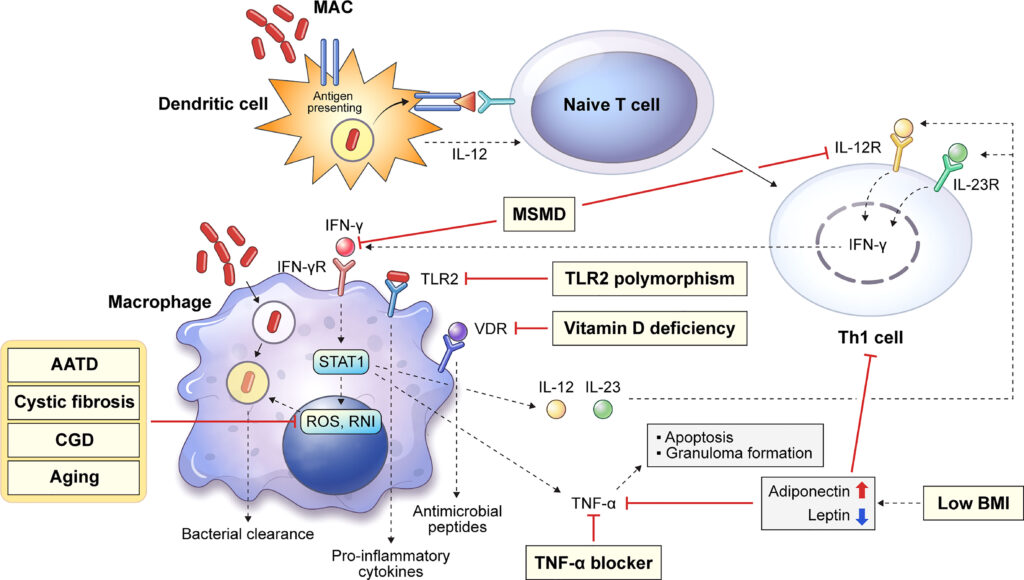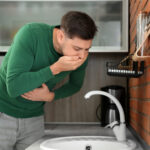Mycobacterium avium complex (MAC) refers to a group of nontuberculous mycobacteria (NTM), including Mycobacterium avium and Mycobacterium intracellulare. These organisms are commonly found in the environment—particularly in water, soil, and dust—and are opportunistic pathogens.
While MAC rarely causes illness in individuals with healthy immune systems, it poses significant risk to immunocompromised populations, particularly those with HIV/AIDS, chronic lung disease, or individuals undergoing immunosuppressive therapies.

Transmission Pathways and Environmental Exposure
MAC is not transmitted from person to person. Infection typically occurs through:
- Inhalation of aerosolized water droplets containing MAC (e.g., from showers, humidifiers, or hot tubs)
- Ingestion of contaminated food or water
- Direct contact with contaminated soil or dust, especially through skin breaks
These exposure routes underline the necessity of environmental control and hygiene-based prevention strategies.
High-Risk Populations for MAC Disease
Prevention is paramount for individuals with increased susceptibility, including:
- Patients with HIV/AIDS, especially with CD4 counts <50 cells/mm³
- Individuals with bronchiectasis or chronic obstructive pulmonary disease (COPD)
- Persons undergoing chemotherapy or immunosuppressive therapies
- Older adults with weakened mucociliary clearance
- Lung transplant recipients or patients with cystic fibrosis
Understanding these risk profiles is critical for targeted MAC disease prevention.
Key Strategies for the Prevention of MAC Disease
1. Water Safety and Exposure Reduction
- Avoid inhalation of aerosolized water from high-risk sources:
- Do not use public hot tubs, steam rooms, or poorly maintained swimming pools.
- Use showerheads with filters designed to reduce NTM exposure.
- Disinfect household water systems:
- Regularly clean and maintain water filters, humidifiers, and ice machines.
- Flush stagnant water systems before use.
- Use sterile or distilled water in respiratory devices:
- Nebulizers, CPAP machines, and humidifiers must only be filled with sterile water to prevent aerosolized pathogen exposure.
2. Soil and Dust Contact Minimization
- Avoid activities that generate dust or involve contact with soil, such as:
- Gardening without protective masks and gloves
- Using potting mix or compost, especially indoors
- When exposure is unavoidable:
- Wear N95 respirators and protective gloves
- Change clothes and shower immediately after soil contact
Immune System Optimization for MAC Prevention
1. HIV/AIDS Management
For patients living with HIV:
- Initiate antiretroviral therapy (ART) promptly and maintain adherence
- Monitor CD4 cell count and start prophylactic azithromycin or clarithromycin if count drops below 50 cells/mm³
- Ensure consistent follow-up care to prevent opportunistic MAC infection
2. Immune-Modulating Medications
- Evaluate the risk-benefit ratio of immunosuppressive agents
- Monitor for early signs of MAC in transplant patients or those on corticosteroids and biologics
- Implement antimicrobial prophylaxis when indicated
Pulmonary Health and Structural Lung Disease Management
1. Bronchiectasis and Chronic Lung Disease
Patients with pre-existing lung disorders are more vulnerable to MAC colonization and infection due to impaired airway clearance.
Preventive steps include:
- Routine chest imaging and sputum cultures for high-risk individuals
- Daily airway clearance therapy:
- Chest physiotherapy
- Use of oscillatory PEP devices
- Regular pulmonary follow-up and personalized respiratory hygiene protocols
2. Smoking Cessation and Air Quality Control
- Quit smoking to improve mucociliary function
- Install high-efficiency particulate air (HEPA) filters in home environments
- Avoid exposure to indoor pollutants, mold, and occupational dusts
Diagnostic Vigilance and Early Intervention
Routine Screening for At-Risk Populations
- Annual sputum culture or chest imaging for early MAC detection in chronic lung disease patients
- Immediate evaluation of persistent respiratory symptoms, including cough, fatigue, weight loss, and hemoptysis
Early detection prevents dissemination and reduces complications associated with prolonged untreated infection.
Pharmacological Prophylaxis in High-Risk Individuals
For specific high-risk populations, especially those with advanced immunosuppression:
- Azithromycin (1200 mg weekly) or Clarithromycin (500 mg twice daily) is recommended for MAC prophylaxis in HIV patients with CD4 <50
- Prophylactic therapy should be discontinued once immune recovery is sustained (CD4 >100 for ≥3 months with ART)
Monitoring for drug resistance is essential during long-term prophylaxis.
Institutional and Public Health Measures
1. Healthcare Facility Precautions
- Implement strict water management programs in hospitals and long-term care facilities
- Screen water systems for NTM contamination and use filtration systems
- Educate staff and patients on MAC prevention protocols
2. Community Education
- Disseminate preventive guidance to at-risk groups through healthcare providers
- Promote awareness campaigns on safe water and soil handling practices
- Encourage regular medical checkups for high-risk individuals
Preventing Mycobacterium avium complex disease requires a targeted, evidence-based approach focused on environmental control, immune system support, and vigilant health monitoring. By reducing exposure to contaminated water and soil, managing immunosuppression effectively, and ensuring early detection of respiratory symptoms, we significantly minimize the risk of MAC disease, particularly in vulnerable populations.

